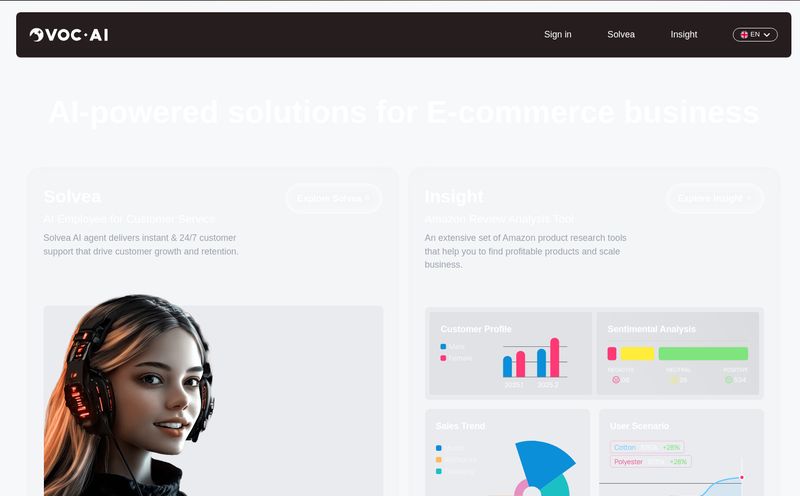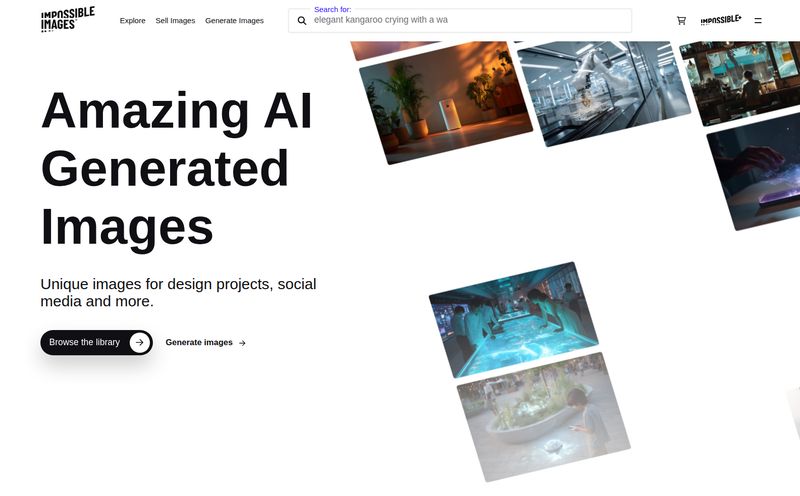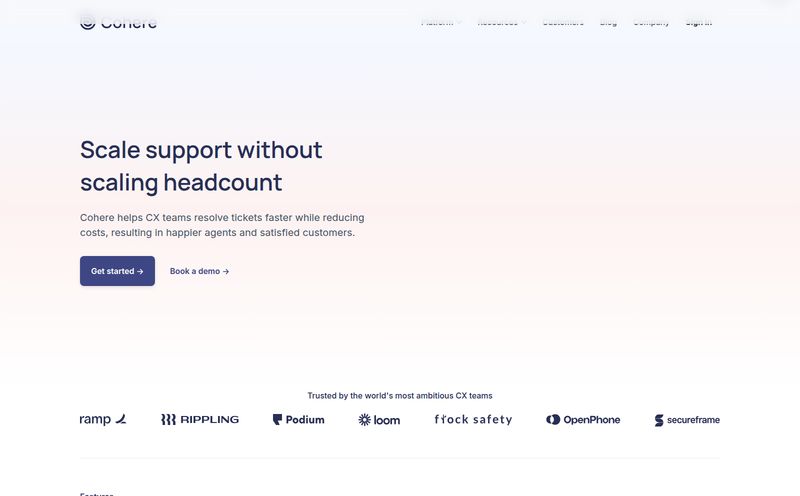If you've spent any time building with Large Language Models, you know the feeling. That weird mix of awe and sheer terror when you’re about to ship a new feature. You’ve prompted, you’ve tested, you’ve tweaked. But when it goes live, you’re basically just closing your eyes, crossing your fingers, and hoping for the best. It’s what I call the “pray and ship” development cycle. And frankly, it sucks.
The core of the problem is that LLMs can be infuriatingly opaque. They’re a bit of a black box. You put a prompt in, something magical happens, and an output comes out. But what happens in between? Why did it suddenly go off the rails for one specific user? Why is it suddenly slower? Answering these questions often feels like reading tea leaves.
For years in the SEO and traffic game, I’ve relied on analytics to see what’s working. I live and die by dashboards. So when I started seeing the same need pop up in the AI space, my ears perked up. A while back, I stumbled upon a platform called LangWatch, and their tagline, “Ship agents with confidence, not crossed fingers,” hit me right in the feels. It’s a tool that promises to be the flight recorder for your AI, shining a massive spotlight into that black box. But does it deliver?
So, What is LangWatch, Really?
Let's cut through the buzzwords. LangWatch is an LLM observability and evaluation platform. Think of it like Google Analytics, but for the inner workings of your AI application. It’s designed to give you, the developer or the product owner, a crystal-clear view of everything that’s happening under the hood. It doesn't just show you the final output; it tracks the entire lifecycle of a request.
This includes the initial prompt, any variables you fed in, the tools your AI agent called, and the step-by-step thought process (or as close as we can get to it) of the agent. It’s about turning the unknown unknowns into knowns. Instead of guessing why your chatbot is giving weird answers, you can trace the exact conversation and see where things went sideways. A true gamechanger.

Visit LangWatch
The Core Pillars: Observability, Evaluation, and a Whole Lot More
LangWatch isn't just one thing; it’s built on a few key ideas that work together. Understanding them is key to getting why this platform is turning heads.
True LLM Observability: More Than Just Logs
If you’re a developer, your first instinct for debugging is to check the logs. But standard application logs are almost useless for understanding LLM behavior. They’ll tell you an API call was made, but they won’t tell you why the model hallucinated or gave a toxic response.
LangWatch’s observability is different. It provides deep traces that let you follow the entire thread. You can see the full context, the chain-of-thought, and any function calls the agent made. This makes debugging ridiculously faster. I remember a project where we spent a solid week trying to figure out why our agent was failing on a specific edge case. A tool like this would have probably turned that week into an afternoon. It’s all about context, and LangWatch provides it in spades.
Evaluating Your AI: From Gut Feeling to Hard Data
How do you know if your AI is getting better or worse over time? A lot of teams rely on vibes and anecdotal evidence. LangWatch wants to replace that with concrete data. It has a powerful evaluation suite that lets you test your models rigorously. You can run offline tests on datasets to benchmark different prompts or models against each other.
One of the coolest features here is the LLM-as-a-Judge evaluation. You can literally use another powerful LLM (like GPT-4) to score the outputs of your application based on criteria you define, like helpfulness, clarity, or lack of toxicity. It’s like having an automated, tireless QA team for your AI's outputs. You can also write your own code-based tests for more specific, deterministic checks. This is how you scale quality assurance in production.
Optimization and Guardrails: Keeping Your Agents on Track
Once you can see and evaluate what’s happening, the next logical step is to optimize. LangWatch provides the analytics you need to do just that. You can analyze user interactions, identify common failure points, and gather valuable data to fine-tune your prompts and models. It’s the feedback loop we’ve all been missing.
And then there are the Guardrails. This is huge. LangWatch helps you implement safety measures, like automatically detecting and redacting Personal Identifiable Information (PII) or preventing your model from discussing sensitive topics. In an era where AI safety and security are paramount, this isn't just a nice-to-have; it's a necessity.
Who Is This For? Solo Devs, Startups, and Enterprises
One thing I appreciate is that LangWatch isn’t just for giant corporations with massive AI budgets. They’ve structured their platform to be accessible for pretty much anyone building with LLMs. The collaboration features are a nice touch, allowing non-technical folks like project managers or content strategists to go in, annotate conversations, and provide feedback without needing to be a Python wizard.
Whether you're a solo developer hacking away on a weekend project or a large enterprise deploying complex, multi-agent systems, there seems to be a place for you. The platform's ability to integrate with any major AI framework in Python or TypeScript means you don't have to re-architect your entire application to get it working.
Let's Talk Pricing: The LangWatch Plans
Okay, the big question: what’s this going to cost? The pricing model is pretty straightforward and flexible, which is a relief. They have a few tiers, and I'll break them down simply.
| Plan | Price | Best For | Key Feature |
|---|---|---|---|
| Developer | Free | Hobbyists & Getting Started | 1k traces/mo, basic observability |
| Launch | €59/month | Startups & Scaling Products | 20k traces/mo, real-time evaluations |
| Scale | €199/month | Production-Ready Teams | 80k traces/mo, self-hosting option |
| Enterprise | Custom | Large-scale Deployments | Custom everything, SSO, dedicated support |
The Free tier is genuinely useful for trying things out. The Launch and Scale plans feel well-positioned for serious projects that are either entering or are already in production. And for the big players, the Enterprise plan offers things like self-hosting, dedicated support, and advanced security compliance like SOC2 and GDPR, which are non-negotiable for many companies.
The self-hosted option is particularly interesting. It gives you full control over your data, which is a massive plus for industries with strict data privacy requirements. Just be aware that it comes with its own infrastructure management responsibilities.
The Not-So-Perfect Bits
No tool is perfect, and it would be disingenuous to pretend otherwise. Based on my analysis and experience with similar platforms, there are a few things to keep in mind. The platform is powerful, and with that power comes a bit of a learning curve, especially for the more advanced evaluation and optimization features. You’ll need to invest some time to get the most out of it.
Also, while the tiered pricing is great, for applications with huge volume, the trace-based model could become a significant cost. You'll want to have a good handle on your expected usage. And as mentioned, if you go the self-hosted route, you're taking on the operational load of managing that infrastructure. It’s a trade-off between control and convenience.
Frequently Asked Questions about LangWatch
What exactly is LLM observability?
- Think of it as the ability to ask any question about your LLM application and get an answer. It goes beyond simple logging to provide deep, contextual traces of every action your AI agent takes, from the initial prompt to the final output, including any tools it used along the way.
How does LangWatch integrate with my app?
- It's designed to be pretty easy. LangWatch provides SDKs (Software Development Kits) for Python and TypeScript. You typically just need to add a few lines of code to your application to start sending trace data to the platform. It's built to work with popular frameworks like LangChain, LlamaIndex, and others.
Is there a free version of LangWatch?
- Yes, there is! The 'Developer' plan is free and includes 1,000 traces per month. It's perfect for individual developers, small projects, or just for testing out the platform's core features before committing to a paid plan.
Can I host LangWatch on my own servers?
- You can. LangWatch offers a self-hosted or hybrid deployment option, primarily for its Scale and Enterprise customers. This gives you maximum control over your data and security, which is critical for companies in regulated industries.
What makes LangWatch different from LangSmith?
- That's a great question, as they're both in a similar space. While LangSmith is deeply integrated with the LangChain framework, LangWatch is framework-agnostic, meaning it's built to work with any tech stack. LangWatch also has a very strong focus on real-time monitoring, automated anomaly detection, and providing collaboration tools for both technical and non-technical team members, which can be a key differentiator.
How does the 'LLM-as-a-Judge' feature work?
- It's a clever way to automate quality control. You configure a powerful, state-of-the-art LLM (like GPT-4) to act as an impartial judge. You then provide it with the outputs from your own LLM application and a set of scoring criteria (e.g., 'Is the response helpful?', 'Is the tone professional?', 'Does it contain any hallucinations?'). The judge then scores the output, giving you a scalable way to evaluate performance without manual review.
Final Thoughts: Is LangWatch Worth It?
So, we come back to the original question. Does LangWatch let you ship with confidence instead of crossed fingers? In my opinion, yes. Absolutely.
Building with LLMs without an observability tool is like trying to navigate a ship in a storm with no compass and a blindfold on. You might get there, but it's going to be stressful, inefficient, and you'll have no idea how you did it. LangWatch feels like a modern navigation system. It provides the visibility, the data, and the controls needed to move from a hobbyist approach to a professional, engineering-led one.
"LangWatch didn't just help us optimize our agents' performance; it transformed our approach to teaching agents, so we can contribute to shaping the next frontier of AI." - Quote from a LangWatch user
If you're serious about building, scaling, and maintaining high-quality LLM applications, investing in a platform like LangWatch isn't just a good idea—it's becoming essential. It’s the difference between guessing and knowing. And in this rapidly evolving space, knowing is everything.



